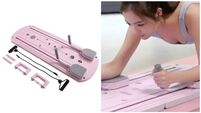Pete the Vet: Pets need healthy mouths

Active home care (tooth brushing) is still the most effective method for the front teeth
There’s one big difference between pets and humans when it comes to their teeth. It’s simple: animals don’t care what they look like. Our appearance is important to us: we want to have perfectly spaced, white, healthy-looking teeth, so that we can smile with confidence. We don’t want to see photographs of ourselves with empty gaps where teeth should be. We don’t want to have crooked, protruding, or discoloured teeth. Cosmetic dentistry has become a major industry.
Pets are completely different: all that matters to them is that they have comfortable, functional, healthy teeth and gums. And that should be the only focus of veterinary dentistry.
Funnily enough, it’s very similar to what needs to be done to keep human teeth healthy. There’s a myth that animal teeth are somehow self-cleaning, and that all that needs done is to chuck dogs an occasional raw bone, while encouraging cats to catch rodents and birds to give themselves a natural floss and brush.
This is far from the truth: evidence shows that wild dogs suffer as much dental disease as pets (raw bones are inclined to cause broken teeth), while wild cats have precisely the same type of dental decay problems that modern pet cats endure.
There are species differences, of course. Dogs do not suffer from dental decay like humans: they don’t develop cavities that need to be repaired with fillings. And while cats do often develop areas of dental decay that can be painful, they occur at a different part of the tooth to humans (close to the root) and they cannot be effectively repaired with fillings. Unfortunately, the only answer is extraction of those painful decayed teeth.
The big message, however, is that just as for humans, simple daily home dental care is the most effective way of ensuring that your pet’s teeth are as healthy as possible into advanced age.
This is important for health as well as comfort: we know that bacteria can spread from diseased mouths to other parts of the body, such as the heart. And we know that animals with healthy mouths live for longer than pets with dental disease.
As with ourselves, the combination of food residue, saliva and bacteria leads to the accumulation of plaque on the teeth. If this is not removed regularly, the plaque reacts with minerals in the saliva to form calculus, or tartar, the hard, brown substance that dentists need to remove from our teeth when we are having them cleaned professionally.
If dental calculus is allowed to accumulate, the gums become inflamed, then they recede, infection gathers, teeth loosen, and long term, foul smelling, periodontal disease develops.
Something like 80% of dogs and cats over the age of three already have some degree of dental disease. Yet because it’s so easy to ignore pets’ teeth (they are nearly always well hidden behind their lips), most people don’t know that there’s a problem until it’s advanced, by which time more radical action (such as veterinary dental work under anaesthesia) is needed. Daily home care can prevent this from happening.
The Global Guidelines for Veterinary Dentistry, published by the World Small Animal Veterinary Association (WSAVA), summarise the latest scientific view of optimal pet dental care, including a section on home dental care, which is the area that pet owners need to know about.
Just as with humans, regular effective removal of dental plaque is the key. In the past, vets tried to encourage pet owners to brush their pets’ teeth every day. Understandably, most people struggle to do this: when you say “open wide please”, most pets refuse to do so.
The new guidelines have introduced a new science-backed recommended way of caring for pets’ teeth, describing two effective ways of doing removing plaque: active and passive.
Active home care (tooth brushing) is still the most effective method for the front teeth (the incisors and the long, pointy canine teeth). These teeth are easy to reach, and pets can be trained to accept brushing as a daily routine.
Passive home care (dental chews and similar products) is now the recommended method for the back teeth, which are used for chewing. Owners will be relieved to hear that they no longer need to battle to get the toothbrush back into the far corners of their pets’ mouths.
To quote the guidelines, "a combination of active and passive home care is best."
It's important to select the right type of chew products, choosing those that have been clinically proven to be effective. The best examples are proprietary dental chews made from compressed wheat and cellulose, incorporated into treats. Rawhide chews also have good evidence for efficacy, as do some special dental-cleaning pet diets.
Plain baked biscuit treats and chew toys (e.g. string and rope toys) have not been shown to clean the teeth effectively, while tooth fractures are a risk for very hard chews, such as antlers, hooves, or raw bones.
In the social media driven world of the internet, misinformation abounds, and mistaken, unproven views are often widely believed. But as a vet in practice, I follow the science, and it’s backed up by my daily experience. Whenever one of my elderly patients has healthy teeth, I ask about their home dental care routine. And the answer is invariably “daily dental chews”. They are highly effective, whether people like to believe this or not.
To end with some good news: flossing of pets’ teeth is definitely not something that’s needed. Even the top veterinary dental experts don’t recommend this.
- For the WSAVA global guidelines on pet dental care, visit https://wsava.org/global-guidelines/global-dental-guidelines/

Celebrating 25 years of health and wellbeing








